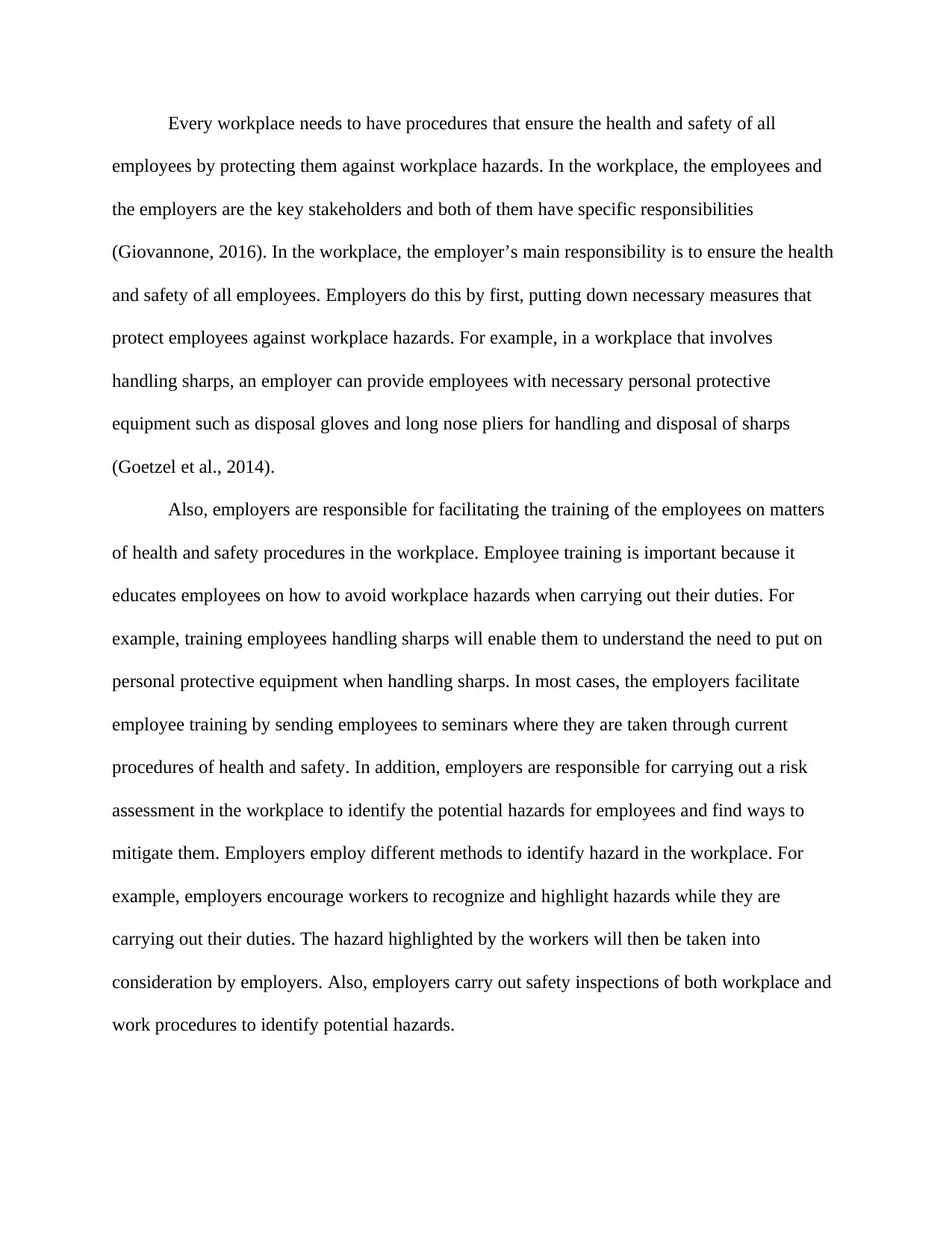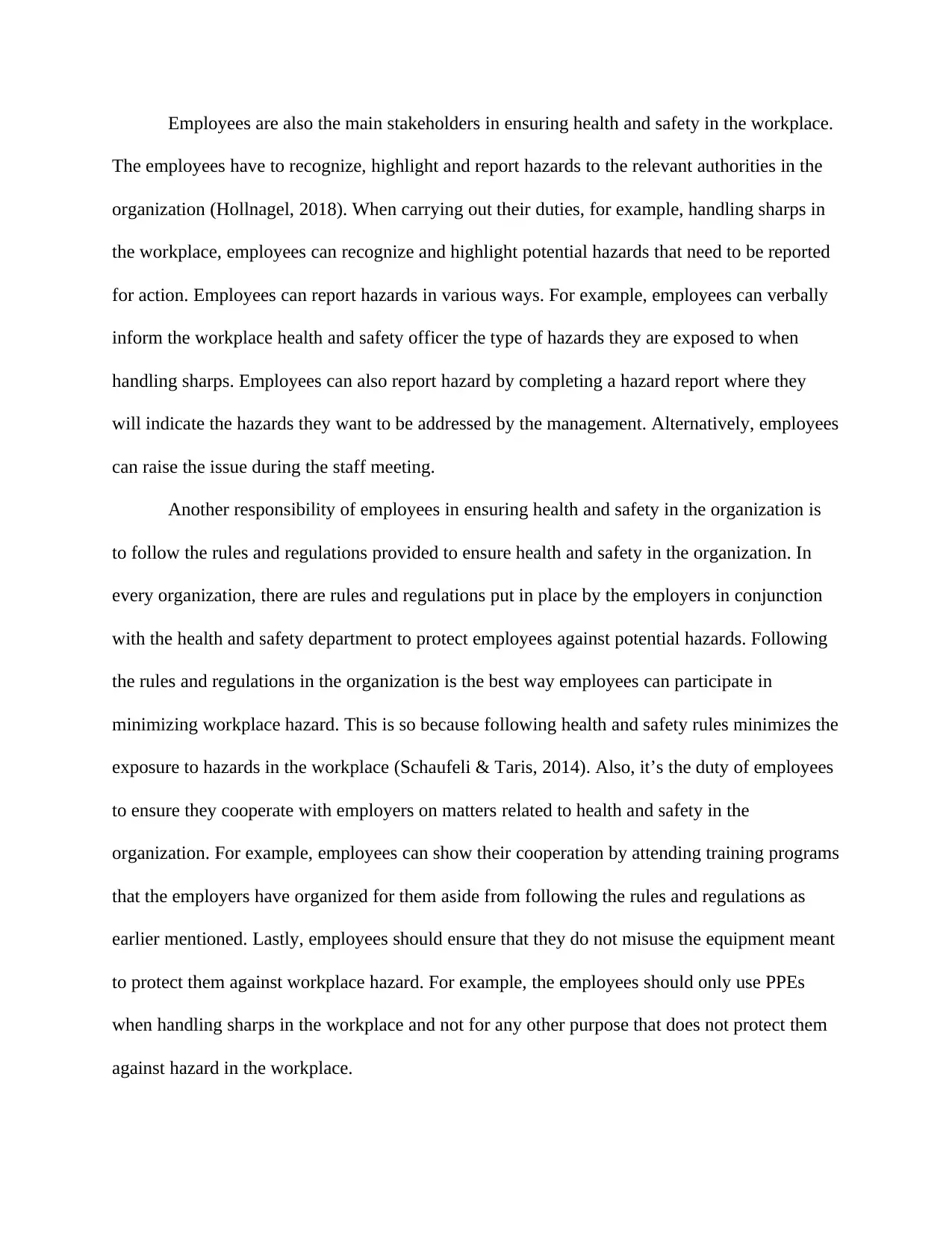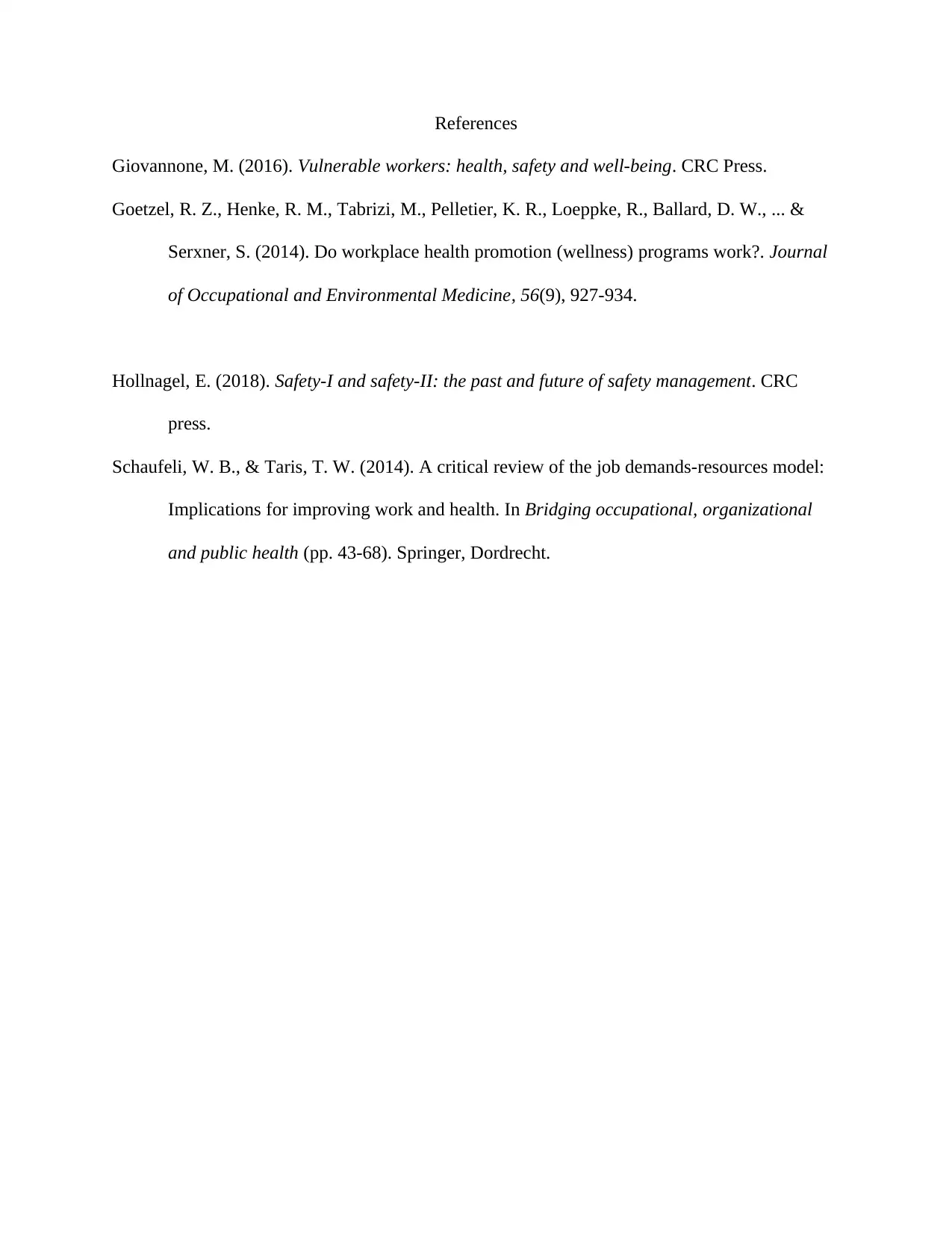Work Health and Safety Report: Hazard Identification and Reporting
VerifiedAdded on 2022/10/06
|3
|816
|18
Report
AI Summary
This report delves into the critical aspects of work health and safety, emphasizing the importance of protecting employees from workplace hazards. It highlights the key responsibilities of both employers and employees as primary stakeholders. Employers are tasked with implementing protective measures, such as providing personal protective equipment (PPE) and facilitating comprehensive employee training programs on hazard avoidance. They are also responsible for conducting risk assessments and safety inspections to identify and mitigate potential hazards. Employees, on the other hand, play a crucial role by recognizing, reporting, and highlighting hazards to the relevant authorities, adhering to established safety regulations, cooperating with employers on safety matters, and using protective equipment appropriately. The report uses the example of handling sharps to illustrate the practical application of these principles, demonstrating how employees can identify and report hazards to ensure a safe working environment. This ensures that risks are eliminated or minimized. The report draws on scholarly sources to support its arguments, emphasizing the need for a proactive and collaborative approach to workplace health and safety.
1 out of 3








![[object Object]](/_next/static/media/star-bottom.7253800d.svg)